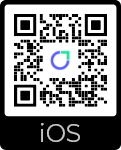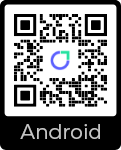- April 19, 2023
- by Webmaster
- Uncategorized
- 2703 Views
- 0 Comments
Mechanism of a broker
Mechanism of a broker
Brokers assume a crucial function in facilitating the transfer of research findings from producers (such as researchers) to implementers (such as practitioners), consequently bridging the divide between research and practical application. The recognition of brokers' significance is now widespread in the expanding body of literature focused on the utilization of research evidence; but What factors make a broker a broker. Two overarching approaches emerge to address this inquiry – one emphasizing the structural aspect, while the other accentuates the functional aspect. However, definitions often remain implicit, necessitating explicit clarification to truly comprehend the workings of brokers and reconcile the disparities between these approaches.
The structural aspect of brokerage
According to the structural perspective of brokerage, the distinguishing factor that defines a broker as a broker is their placement within a network of communication and influence. Simplistically depicted, researchers generate research, practitioners utilize research, and all other individuals or entities have the potential to serve as brokers, acting as intermediaries connecting these two communities. In essence, brokers encompass individuals and organizations that do not directly produce or employ research, but instead occupy a position within a communication and influence network, enabling practitioners to access and apply research, while also facilitating researchers' understanding of practitioners' experiences. Within the framework of this structural understanding of brokerage, multiple approaches exist to further explore this concept.
Geodesic brokers are the people and organizations that link researchers (R) and practitioners (P) most efficiently.
However, relying solely on the most efficient route can be limiting since information often deviates from such paths. A more comprehensive approach entails identifying brokers beyond the geodesic ones, encompassing indirect or less efficient connections between researchers and practitioners. By employing a small world design to trace the trajectories of information, both geodesic and non-geodesic brokers can be identified. This design framework not only allows for a deeper understanding of the research-practice gap's nature and magnitude but also provides valuable insights into potential strategies for its closure.
Adopting a more focused perspective, the triadic approach concentrates on three primary participants: a source of information (S), a broker (B), and a recipient of the information (R). This approach aims to delineate diverse broker types based on the specific contexts in which these three actors operate. For instance, brokers originating from the same setting as recipients can assume the role of gatekeepers, impeding the sources' access to the intended recipients. Conversely, brokers hailing from the same setting as sources can act as representatives, conveying information on behalf of the sources to the recipients. Finally, brokers positioned in settings distinct from both sources and recipients can act as intermediaries, forging connections between these disparate domains. Within our interactions with public school administrators, we have discerned these three broker types actively involved in the transmission of research evidence.
The functional aspect of brokers
The functional conception of brokers contends that what makes a broker a broker is what they do. Brokers can fulfill diverse and distinct functions when it comes to communicating information to practitioners and policymakers. Furthermore, these functions can be categorized based on the extent of brokers' involvement in the process, in contrast to the structural viewpoint that emphasizes their placement.
Brokers possess the ability to selectively transmit specific pieces of information that they consider credible or valuable, thereby serving a filtering function. For instance, a broker may choose to share an article regarding the effectiveness of grade retention with a school principal while opting not to share an article discussing innovative teacher evaluation practices. The act of filtering information necessitates brokers actively participating in the process as they are required to make judgments about which information should be shared.
Given that researchers typically produce information that is not readily accessible to practitioners, brokers play a valuable role in synthesizing this information. The process of synthesis necessitates brokers to be actively engaged as they undertake the task of reviewing, interpreting, and modifying the content and presentation of the information.
Lastly, brokers occasionally engage in advocacy, actively promoting the utilization of specific information by practitioners. For instance, recent research supported by foundations regarding the utilization of research in charter school reforms has revealed that advocacy organizations frequently employ information to advance their own policy objectives to policymakers. Advocacy entails brokers taking a proactive role, as they utilize information to further their own agendas. This active involvement by brokers signifies a substantial level of intervention as they strategically leverage information to pursue their goals.
connecting structure and function
Within these two conceptual frameworks, there exists considerable ambiguity. For instance, within the structural viewpoint, an individual may assume the role of a gatekeeper on one occasion, while functioning as a representative on another. Likewise, an organization might simultaneously engage in filtering and advocating by selectively curating information that aligns with its own agenda.
Although researchers studying brokers are already aware of this kind of fuzziness, they still often adopt either a structural or a functional conception of brokers. But, are these two ways of thinking about brokers really so different? Probably not. In many cases, the structure of a network and the function of its participants are tightly coupled. For example, in a hierarchical workplace, the person at the top is well-positioned to give orders, while the people at the bottom are well-positioned to follow orders. But if things were reversed—if the people at the bottom all give orders and the person at the top tried to follow them—chaos would ensue. Following this logic of a tight coupling between structure and function, certain structures of brokerage likely facilitate certain functions of brokers.
The task of synthesizing information can be efficiently performed by a broker assuming the role of a liaison. Researchers possess highly specialized skills in conducting research and producing evidence, whereas practitioners excel in delivering services based on their expertise. Liaison brokers, originating from a distinct setting, have the flexibility to cultivate a unique set of specialized skills. They excel in synthesizing intricate research findings into practical and comprehensible formats, or translating practitioners' experiences into data-driven insights. By bridging the gap between these two domains, liaison brokers facilitate the effective exchange of knowledge and promote the integration of research and practice.
A broker acting as a liaison finds it relatively effortless to synthesize information. Researchers possess specialized expertise in research and evidence generation, while practitioners excel in service delivery with their own set of specialized skills. Liaison brokers, originating from a distinct context, enjoy the freedom to cultivate a unique range of specialized abilities. They excel in transforming intricate research findings into practical and easily comprehensible formats or converting practitioners' experiences into data.
Ultimately, the task of promoting the utilization of specific evidence or evidence-based practices is most efficiently carried out by a representative broker. A representative broker, hailing from the same context as the source of information, aligns their goals and agenda. However, unlike the source, a representative broker possesses direct interaction with the intended recipient and user of the information.
The correlation between brokerage structures and broker functions, as depicted in this outline, underscores the intimate connection between these two distinct concepts of brokers. While a direct one-to-one correspondence between structure and function is likely not so simplistic, acknowledging the close interrelation can bring greater clarity to the question: What defines a broker? By conceptualizing brokerage structures and broker functions as interconnected, it becomes feasible to harmonize two existing bodies of literature on brokers and knowledge transfer. This approach also aids in identifying strategies to optimize the effectiveness of brokers in enhancing the utilization of research evidence. For instance, in scenarios where research evidence is highly intricate, and synthesis stands out as a crucial function for brokers, efforts can be directed towards supporting individuals in liaison-type positions. Conversely, when the primary challenge lies in the overwhelming volume of research evidence and other information, and filtering becomes a critical broker function, support can be tailored for those in gatekeeper-type positions. However, in all these situations, recognizing that structure and function complement each other rather than compete is vital for facilitating the utilization of research evidence.












